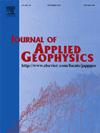Joint Lamé constants and P-wave anisotropic parameter estimation of vertical transverse isotropy coal-measure gas reservoir
IF 2.2
3区 地球科学
Q2 GEOSCIENCES, MULTIDISCIPLINARY
引用次数: 0
Abstract
The Lamé constants (λ and μ) and anisotropic parameters (ε, γ, and δ) are the key quantities to calculate the brittleness indices and fluid factors in unconventional reservoirs, supporting high-precision seismic data processing as well as anisotropy characterization. However, accurately estimating these quantities using the traditional amplitude variation with offset (AVO) inversion based on the assumption of isotropic media is difficult. Therefore, we conducted a three-parameter AVO inversion and estimated the Lamé constants and P-wave anisotropic parameter (ε) for media with vertically transverse isotropy (VTI), using a coal-measure gas reservoir as an example. A new PP-wave reflection coefficient approximation equation for VTI media was derived based on Rüger's approximation. Subsequently, we analyzed the accuracy of the new equation and designed a strategy for estimating the Lamé constants and P-wave anisotropic parameter. The method was tested and applied using a synthetic seismic record and a cross-well seismic profile. The results demonstrate that the Lamé constants and P-wave anisotropic parameter estimated by both the synthetic seismic record (with or without noise) and cross-well seismic profile (at the well location), agree closely with the well-logging calculated curves. Therefore, the method can reasonably be extended to other similar unconventional reservoirs with certain constraints.
求助全文
约1分钟内获得全文
求助全文
来源期刊

Journal of Applied Geophysics
地学-地球科学综合
CiteScore
3.60
自引率
10.00%
发文量
274
审稿时长
4 months
期刊介绍:
The Journal of Applied Geophysics with its key objective of responding to pertinent and timely needs, places particular emphasis on methodological developments and innovative applications of geophysical techniques for addressing environmental, engineering, and hydrological problems. Related topical research in exploration geophysics and in soil and rock physics is also covered by the Journal of Applied Geophysics.
 求助内容:
求助内容: 应助结果提醒方式:
应助结果提醒方式:


